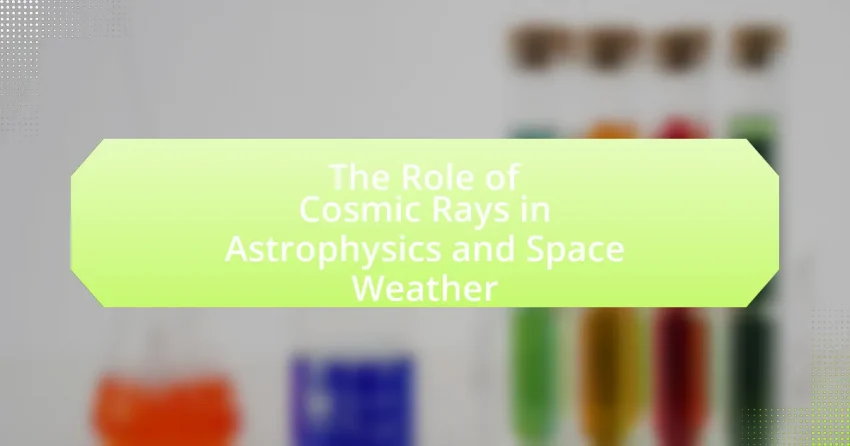Spectroscopy is the study of the interaction between light and matter, playing a crucial role in astronomy by enabling the analysis of celestial objects’ composition, temperature, density, and motion. This article explores the significance of spectroscopy in understanding stars, galaxies, and exoplanets, detailing various types of spectroscopy, including optical, infrared, and radio spectroscopy, and their…
Astronomical Concepts
Welcome to the fascinating world of Astronomical Concepts! Here, you’ll discover a treasure trove of articles that unveil the mysteries of the universe. From the basics of celestial bodies to the complex theories of space-time, each piece is crafted to enrich your understanding. Whether you’re curious about black holes, galaxies, or the Big Bang, you’ll find engaging content that breaks down these ideas in an easy-to-understand way.
Our articles cater to newcomers and seasoned stargazers alike. You’ll learn about the tools astronomers use, the phenomena that shape our night sky, and the latest discoveries that expand our view of the cosmos. Dive in and explore concepts like light years, gravitational waves, and the life cycles of stars. Get ready to expand your horizons and ignite your curiosity about the universe in which we live!
Analyzing the Habitability of Exoplanets: Key Factors
The article focuses on analyzing the habitability of exoplanets, emphasizing key factors such as the presence of liquid water, distance from the host star, atmospheric composition, and geological activity. It defines habitability in terms of conditions that can support life, primarily based on the existence of liquid water and a stable atmosphere. The article discusses…
The Role of Cosmic Rays in Astrophysics and Space Weather
Cosmic rays are high-energy particles from outer space, primarily composed of protons, atomic nuclei, and electrons, playing a crucial role in astrophysics and space weather. This article explores their origins, classification, and significance, highlighting how cosmic rays provide insights into cosmic phenomena such as supernovae and black holes. It also examines their impact on space…
The Life Cycle of Stars: From Nebula to Black Hole
The life cycle of stars encompasses several distinct stages, beginning with the formation of a protostar from a nebula and progressing through the main sequence, red giant or supergiant phases, and ultimately leading to their end states as white dwarfs, neutron stars, or black holes. Stars form through gravitational collapse in molecular clouds, where regions…
The Formation of Galaxies: A Journey Through Time
The formation of galaxies is a complex process involving the coalescence of stars, gas, dust, and dark matter through gravitational attraction over billions of years. This article explores the mechanisms of galaxy formation, including hierarchical structure formation, the role of dark matter, and the initial conditions necessary for galaxy development. It discusses the stages of…
The Structure of the Universe: Clusters, Superclusters, and Voids
The article focuses on the structure of the universe, detailing the hierarchical organization of galaxies, galaxy clusters, superclusters, and cosmic voids. It explains how clusters are defined as large groups of galaxies bound by gravity, while superclusters represent larger formations encompassing multiple clusters. The article also discusses the characteristics and formation processes of these structures,…
The Role of Astrobiology in the Search for Extraterrestrial Life
Astrobiology is a multidisciplinary field that investigates the potential for life beyond Earth by integrating biology, chemistry, geology, and astronomy. This article explores the role of astrobiology in the search for extraterrestrial life, detailing how scientists define extraterrestrial life, the criteria used to identify potential habitats, and the significance of studying extremophiles. It also examines…
The Concept of Time Dilation in Space Travel
The concept of time dilation in space travel refers to the phenomenon where time passes at different rates for observers in varying gravitational fields or relative velocities, as described by Einstein’s theory of relativity. This article explores the scientific principles underlying time dilation, including its definitions, implications for astronauts, and effects on long-duration space missions….
The Relationship Between Gravity and the Shape of the Universe
The article examines the relationship between gravity and the shape of the universe, highlighting how gravity influences the curvature and overall geometry of spacetime. It discusses Einstein’s General Theory of Relativity, which explains how mass and energy warp spacetime, resulting in different geometric configurations: flat, open, or closed. Key observations, such as those from the…
Understanding the Hertzsprung-Russell Diagram
The Hertzsprung-Russell Diagram is a crucial graphical tool in astrophysics that categorizes stars based on their luminosity and temperature, illustrating their evolutionary stages. Developed independently by astronomers Ejnar Hertzsprung and Henry Norris Russell in the early 20th century, the diagram features axes representing stellar luminosity and surface temperature, allowing for the classification of stars into…









